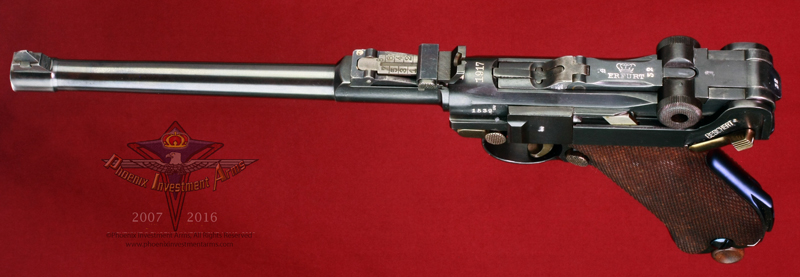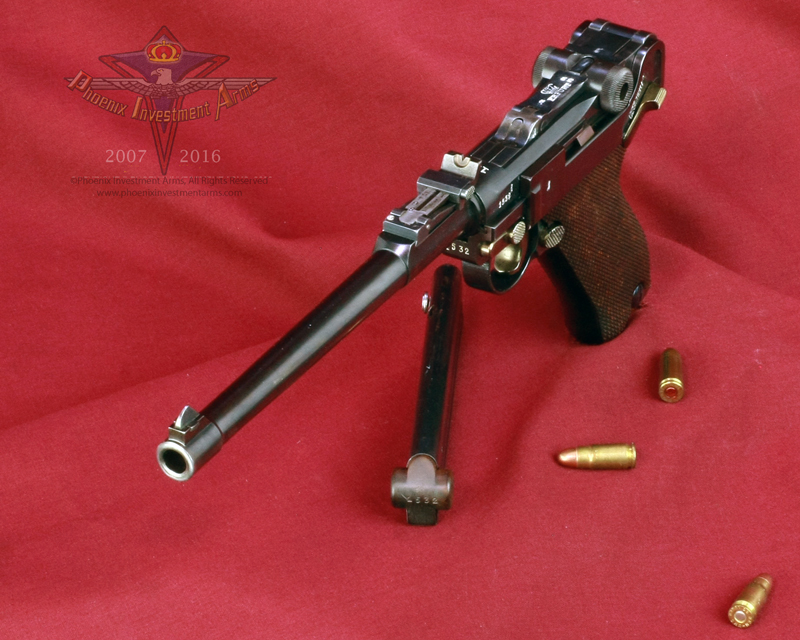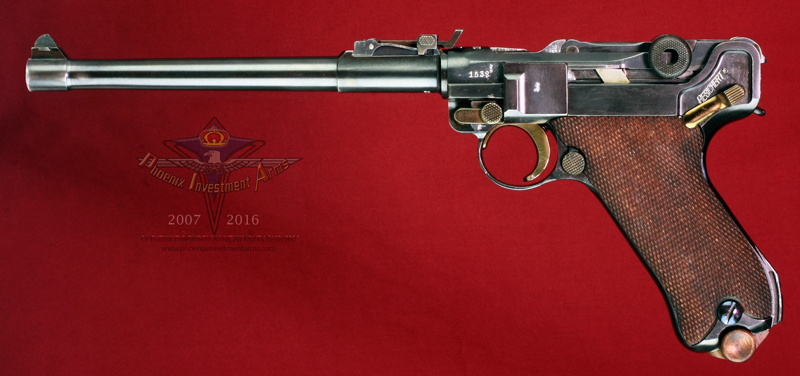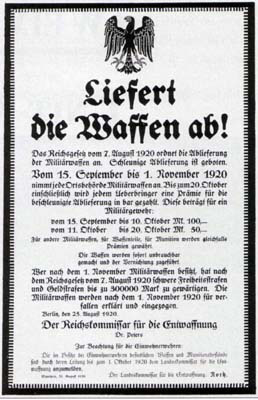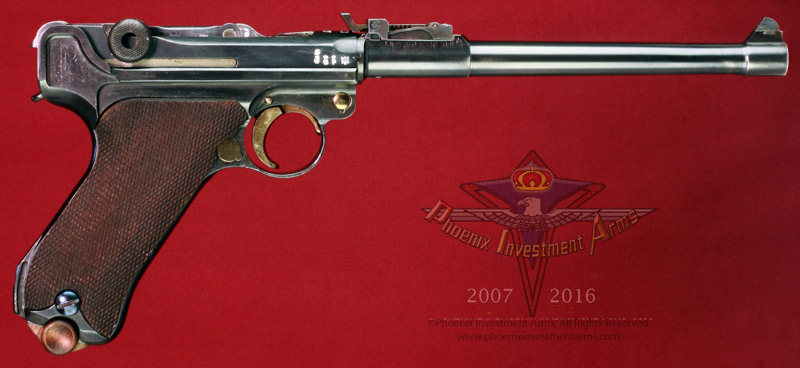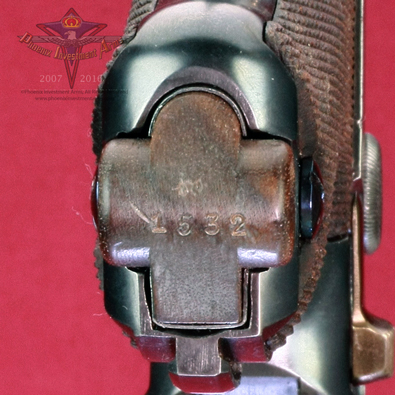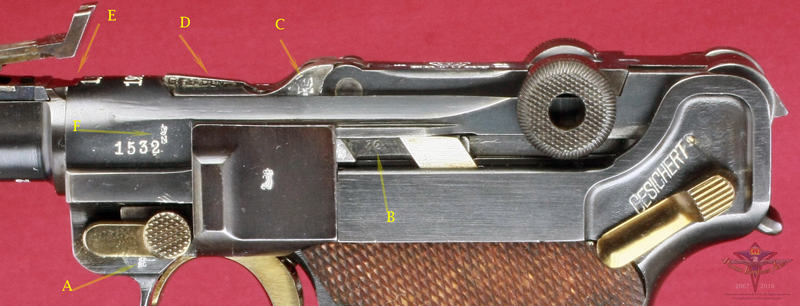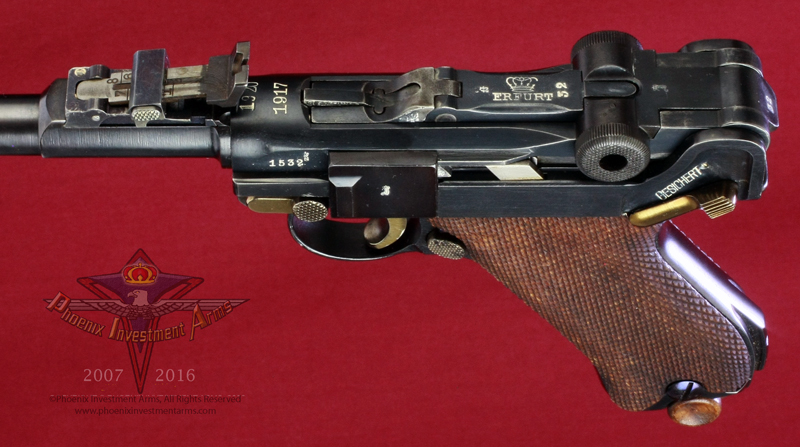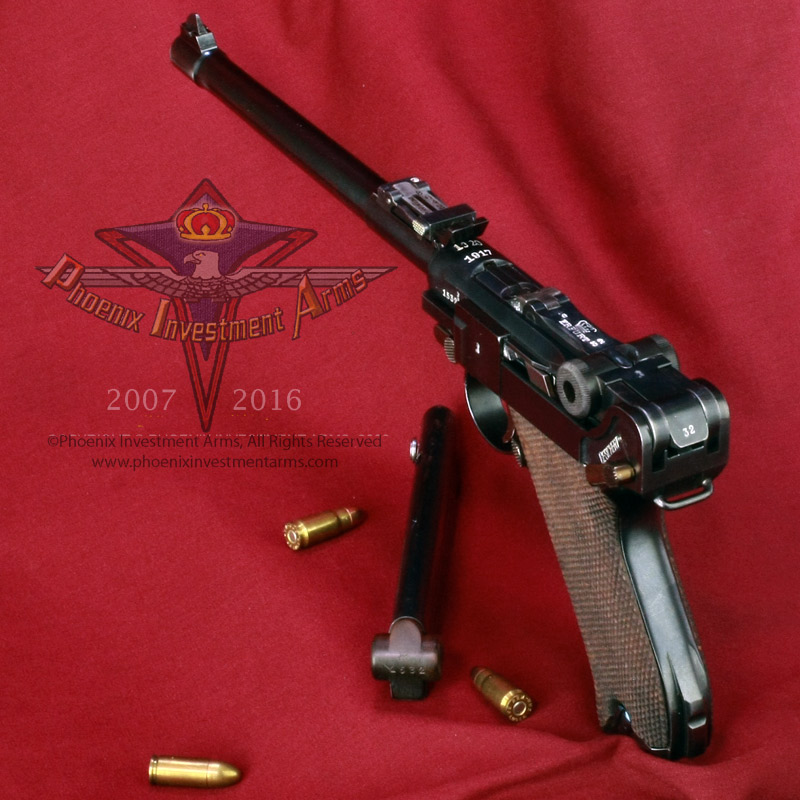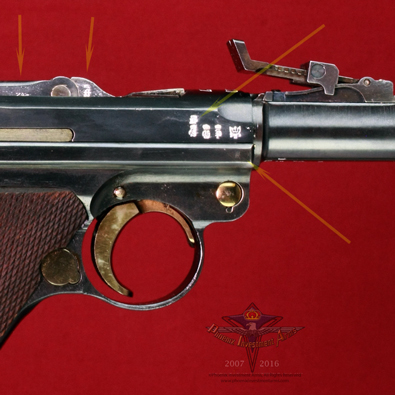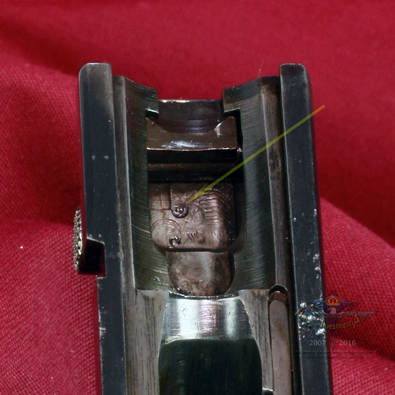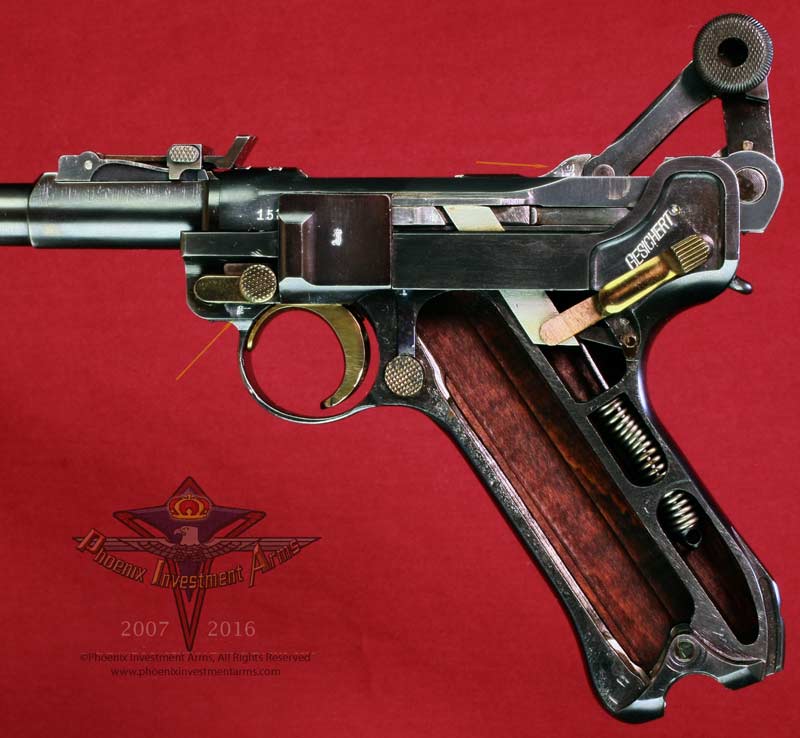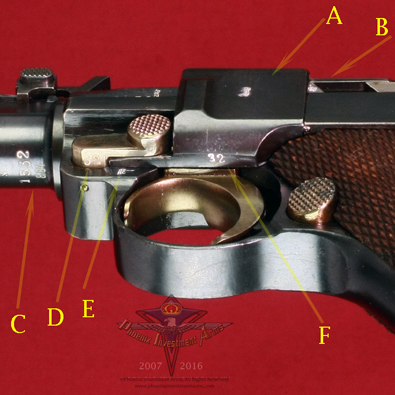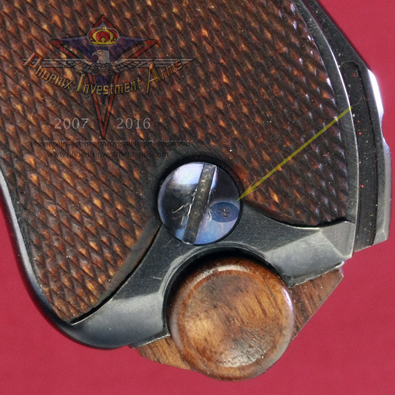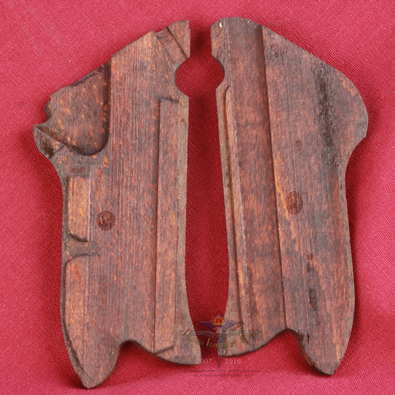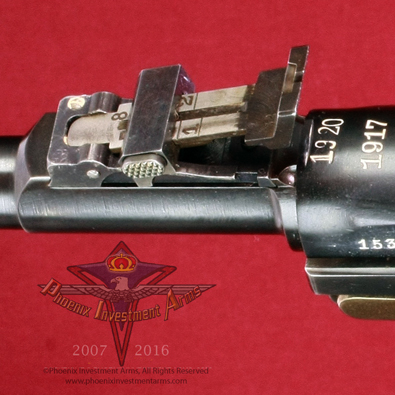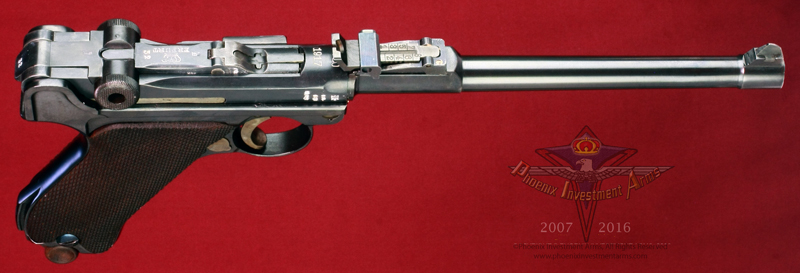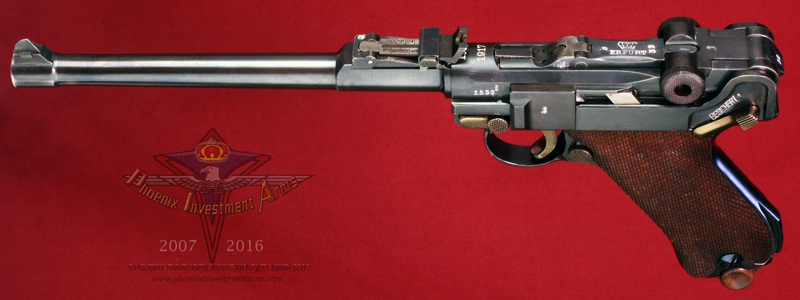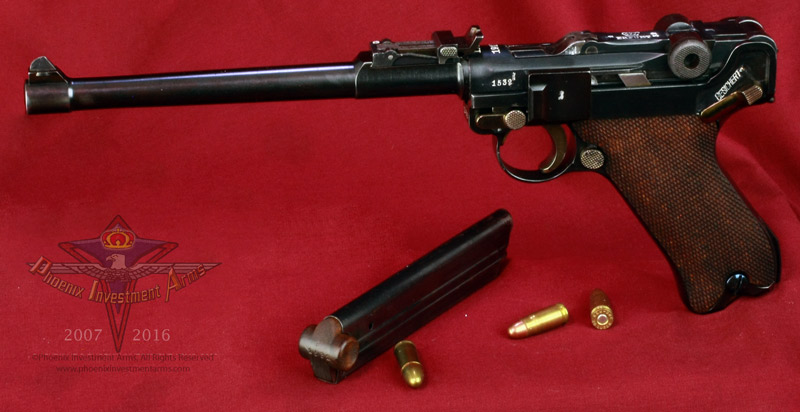|
This is a 1917/20
dated Imperial Luger
manufactured by most probably by DWM in 1919 using the parts manufactured by the Royal Arsenal at Erfurt. Erfurt only made Artillery models one year, 1914, making these rare guns.
This rework is proofed just like an Erfurt, is a 9mm Parabellum with a 100mm barrel on a frame dated 1917. Really a cool Parabellum
(1832) |
|
NOTE: Photographs taken today with the high mega-pixel camera show more than we sometimes can see with the human eye. Magnified close-ups show us tool marks and natural surface conditions that one normally doesn't see in the ordinary handling of the weapon. Photographs are copyrighted, all rights reserved, any extraction, reproduction or display of gun pictures without the express consent of the Phoenix Investment Arms is strictly prohibited. Thank you for your cooperation. Please visit Legal (tabbed) for Conditions of Sale. |
At the outbreak of WWI the German Army seemed reasonably equipped with the Luger Pistol. The DWM factory in Berlin moved to peak production by 1915 and were producing 700 Parabellums per day; however this didn't meet the requirements for the massive mobilization. The Erfurt factory was originally located in Saarn and then moved to Erfurt under private ownership. It was then purchased by the Prussian government and produced huge quantities of weapons, estimated to exceed 800,000 before being dismantled by the Allies at the end of the WWI and the machinery then sold to Simson in Suhl. |
